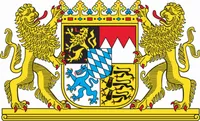Growth and wood quality of Douglas-fir (X36)
| Project DescriptionThe interdisciplinary project between forest growth and wood science looked at growth and wood quality of single trees and stand of 40-year-old Douglas-firs (Pseudotsuga menziesii [Mirb.] Franco). Far beyond its natural range, Douglas-fir has got a lot of attention in Bavaria and Germany. Scientists and practitioners are interested in growth potential and behavior under drought stress. How does this tree species handle longer drought periods? Are there any silvicultural measures to cope these challenges due to climate change? The research project also wanted to close the gap between forestry and wood application. Douglas-fir wood is used predominantly for construction purposes. The analysis describes the impact of the stand density on the quality of the end-product, i.e. wood quality aspects such as knottiness, density, stiffness and strength are relevant. How does silvicultural management affect timber quality? There are modern non-destructive technologies for the assessment of wood quality at different levels of the processing chain. An early, accurate judgement could make the processing chain more efficiently. | |
Important findings in summary
| |
| Duration | 01.09.2010 - 28.02.2014 |
| Responsible person | Dr. Andreas Rais |
| Funding | Bayerisches Staatsministerium für Landwirtschaft und Forsten |
